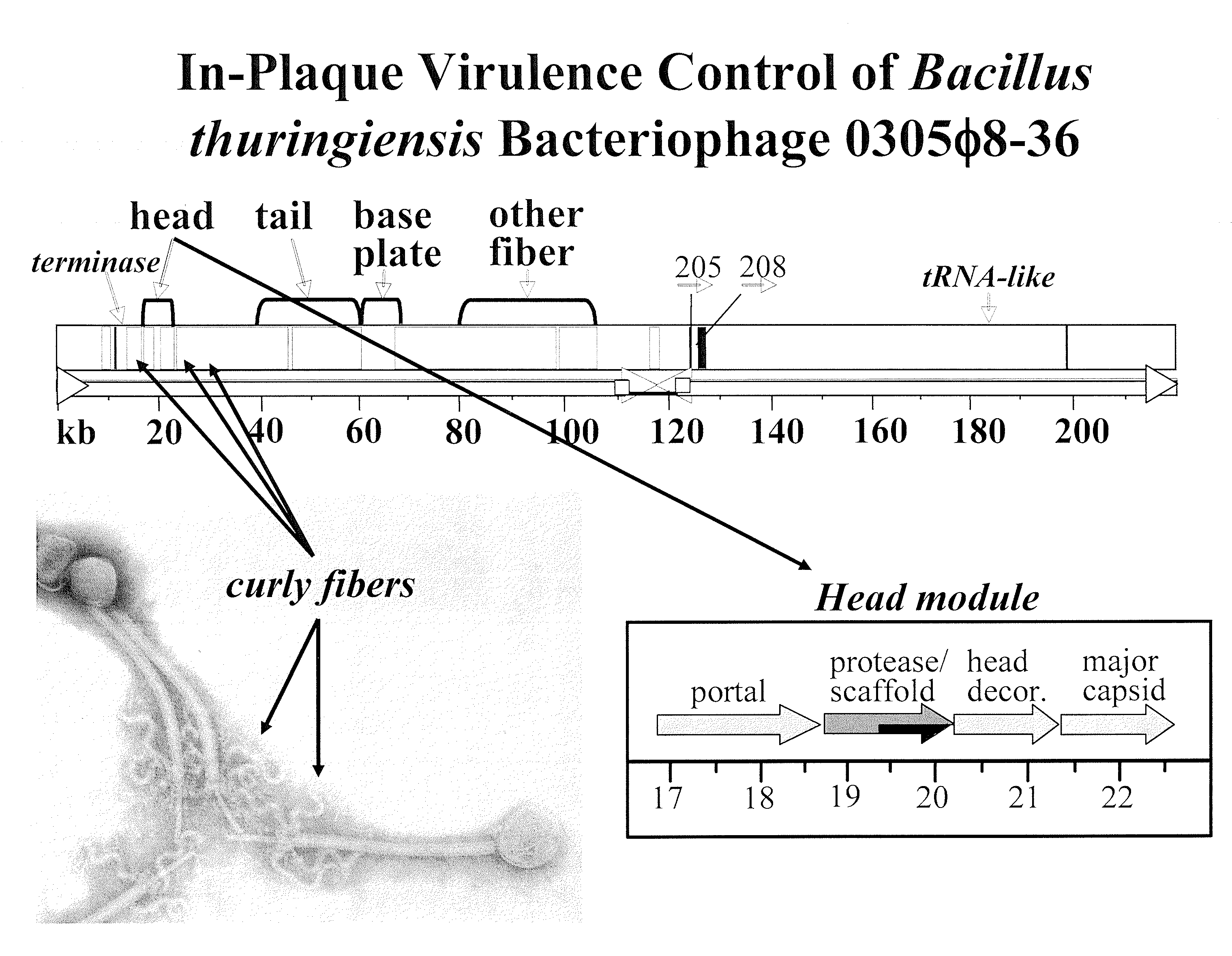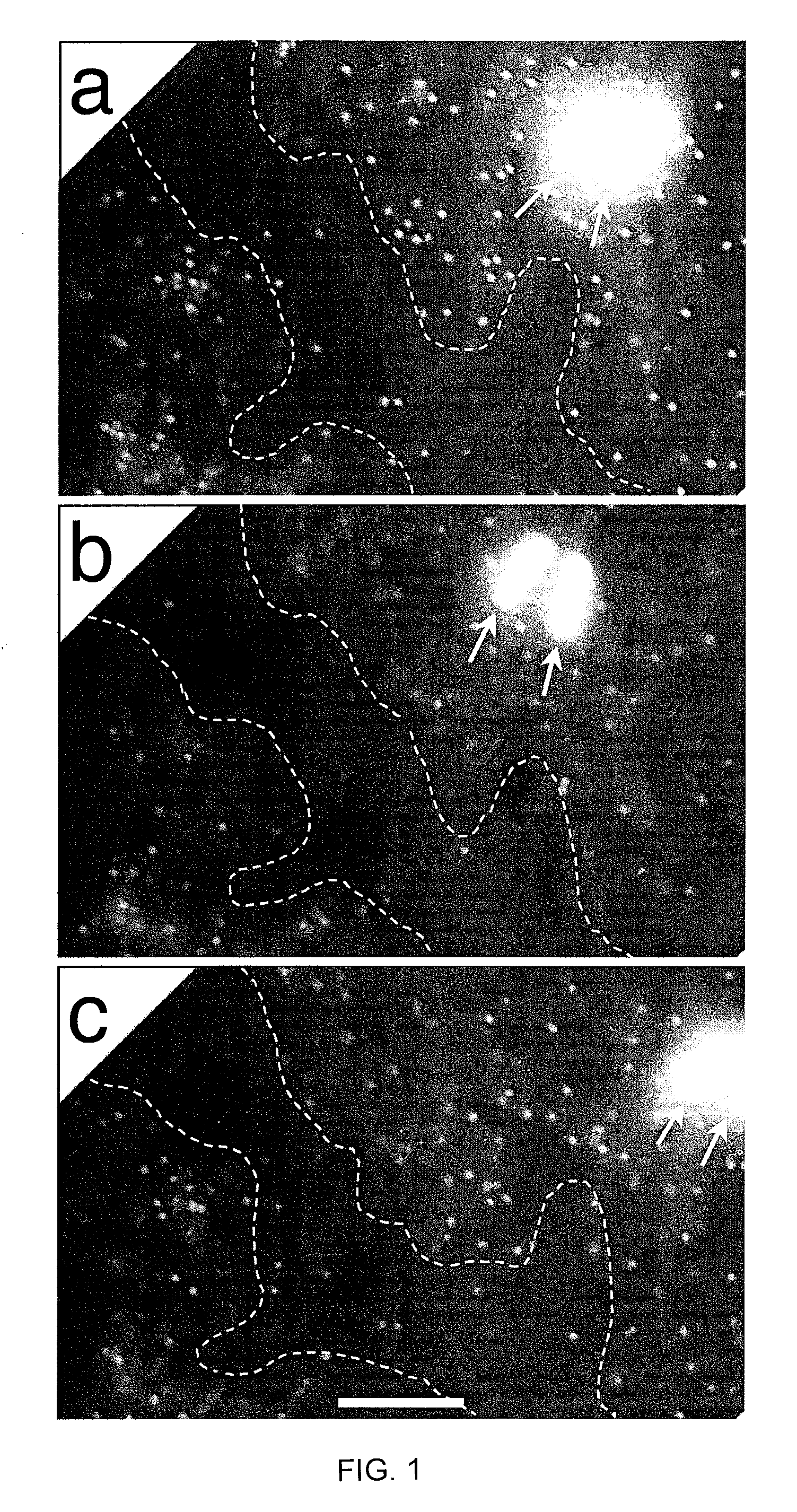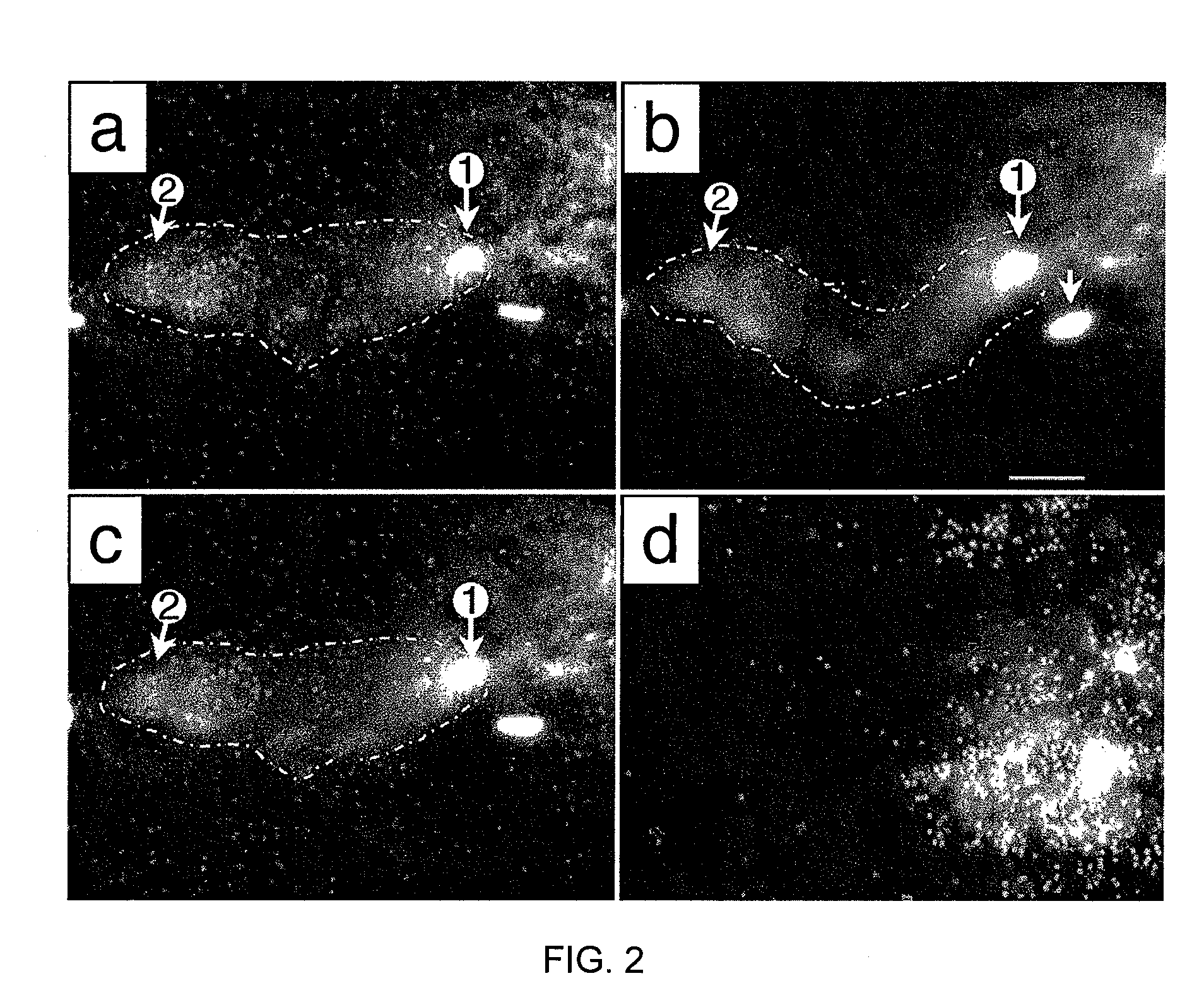Methods and compositions involving bacteriophage isolates
a technology of bacteriophage isolates and compositions, applied in the field of infectious diseases, can solve the problems of increasing the number of bacterial strains, narrow host range of any one bacteriophage, and raising widespread fears of a pre-antibiotic era. , to achieve the effect of improving the detection of lytic phages and increasing the lytic potential of phages
- Summary
- Abstract
- Description
- Claims
- Application Information
AI Technical Summary
Benefits of technology
Problems solved by technology
Method used
Image
Examples
example 1
In Situ Fluorescence Microscopy of Bacteriophage Aggregates
Materials and Methods
[0094]Media and Buffers
[0095]The medium used for growing both environmental bacteriophages and their hosts was the following: 10 g Bacto tryptone, 5 g KCl in 1000 ml water with 0.002 M CaCl2 added post-autoclaving (growth medium). For supporting bacteriophage plaques, the upper gel used in Petri plates was made of agarose (Seakem Gold; Cambrex Corp., Walkersville, Md.; concentration in the text) dissolved in growth medium. Beneath the upper gel, the lower gel was made of 1% Sigma agar in 10 g Bacto tryptone, 5 g NaCl in 1000 ml water.
[0096]Hosts and Bacteriophages
[0097]Bacteriophages 0305φ8-36 (host=Bacillus thuringiensis; Serwer et al., 2007a, b) and G (host=Bacillus megaterium; Fangman, 1978) and their hosts are the strains previously described. Bacteriophage 0905φ8-18 was isolated de novo via overlay of a soil sample with a 0.15% agarose gel that contained the host, B. thuringiensis. Bacteriophage 090...
example 2
In-Plaque Virulence Control of Bacillus Thuringiensis Bacteriphage 0305φ8-36
[0149]Bacillus thuringiensis bacteriophage 0305φ8-36 is lytic, based on both genomic sequence and formation of clear plaques in dilute (0.075-0.10%) agarose gels. However, 0305φ8-36 does not clear liquid cultures (Serwer, P. et al. Virol. J. 4, 21). In the present study, in situ fluorescence microscopy reveals that the dilute gel-supported 0305φ8-36 plaques have two phases. One is weakly fluorescent; the other is comparatively dark. Most bacteriophage particles are in the weakly fluorescent phase. Empirically, formation of two phases requires the presence of bacteriophage particles, bacteria and dilute agarose. The weakly fluorescent phase has both a mass density and a viscosity greater than those of the darker phase. Bacteriophage particles do not cross the phase boundary, even when the specimen is distorted by pressing on the cover glass.
[0150]The above data imply that both bacteriophage particles and agar...
example 3
In Situ Fluorescence Microscopy of Bacteriophage 0305φ8-36
[0153]Bacteriophage 0305φ8-36 is a large myovirus with unusual curly fibers (FIG. 5). The genome is 218,948 base pairs long; the tail is 486 nm long. The classical morphogenesis genes of the 8-36 genome are highly diverged and 8-36 has genes in a new category. The genes are called extra or other fiber. The designation “other fiber” comes from homology of some of these proteins with fibronectin 3 domains and von Willebrand factor domain.
[0154]In addition to an unusual genome, 0305φ8-36 has unusual biology, including plaque radius vs. gel concentration plot that is a steep as the plot for bacteriophage G, the largest bacteriophage known (FIG. 6). 8-36 also does not clear liquid culture, though it does grow in liquid culture. In fact, 8-36 co-grows with the host and presumably co-evolves with the host, very unusual (though not unheard of) behavior. Furthermore, 8-36 undergoes aggregation and also a form of phase separation that ...
PUM
 Login to View More
Login to View More Abstract
Description
Claims
Application Information
 Login to View More
Login to View More - R&D
- Intellectual Property
- Life Sciences
- Materials
- Tech Scout
- Unparalleled Data Quality
- Higher Quality Content
- 60% Fewer Hallucinations
Browse by: Latest US Patents, China's latest patents, Technical Efficacy Thesaurus, Application Domain, Technology Topic, Popular Technical Reports.
© 2025 PatSnap. All rights reserved.Legal|Privacy policy|Modern Slavery Act Transparency Statement|Sitemap|About US| Contact US: help@patsnap.com



